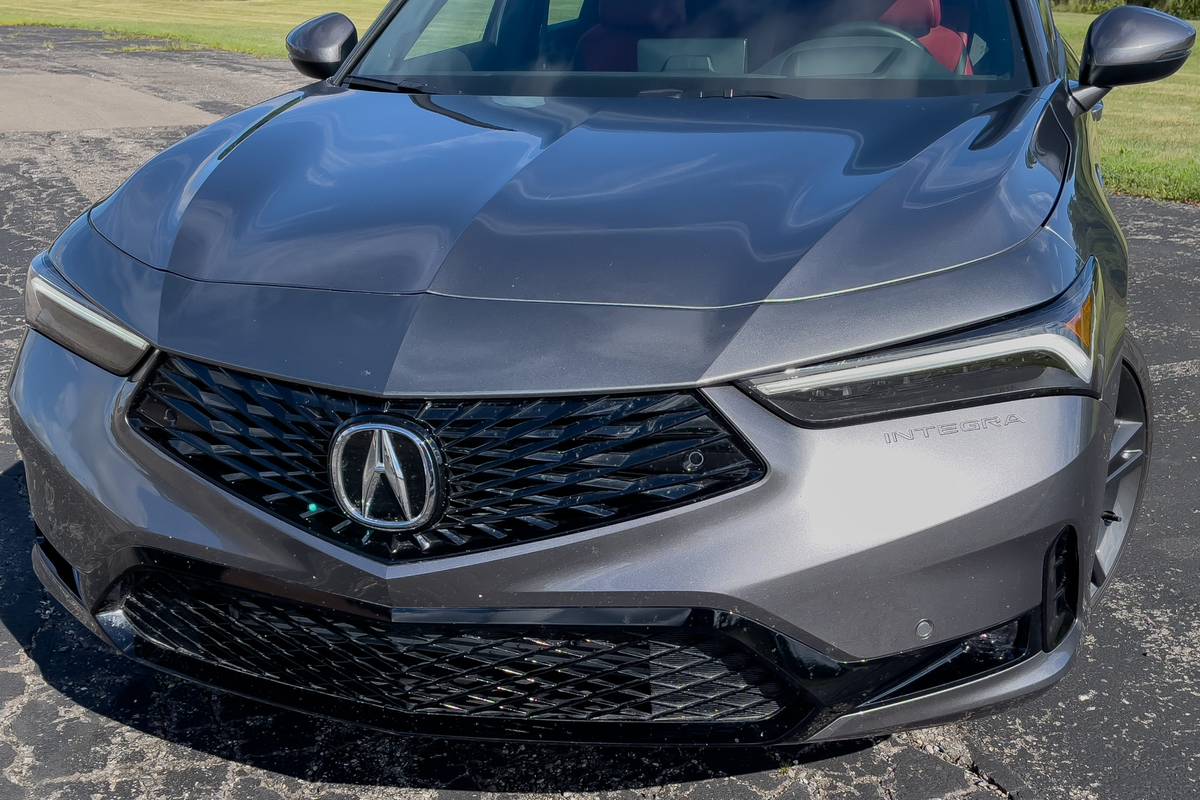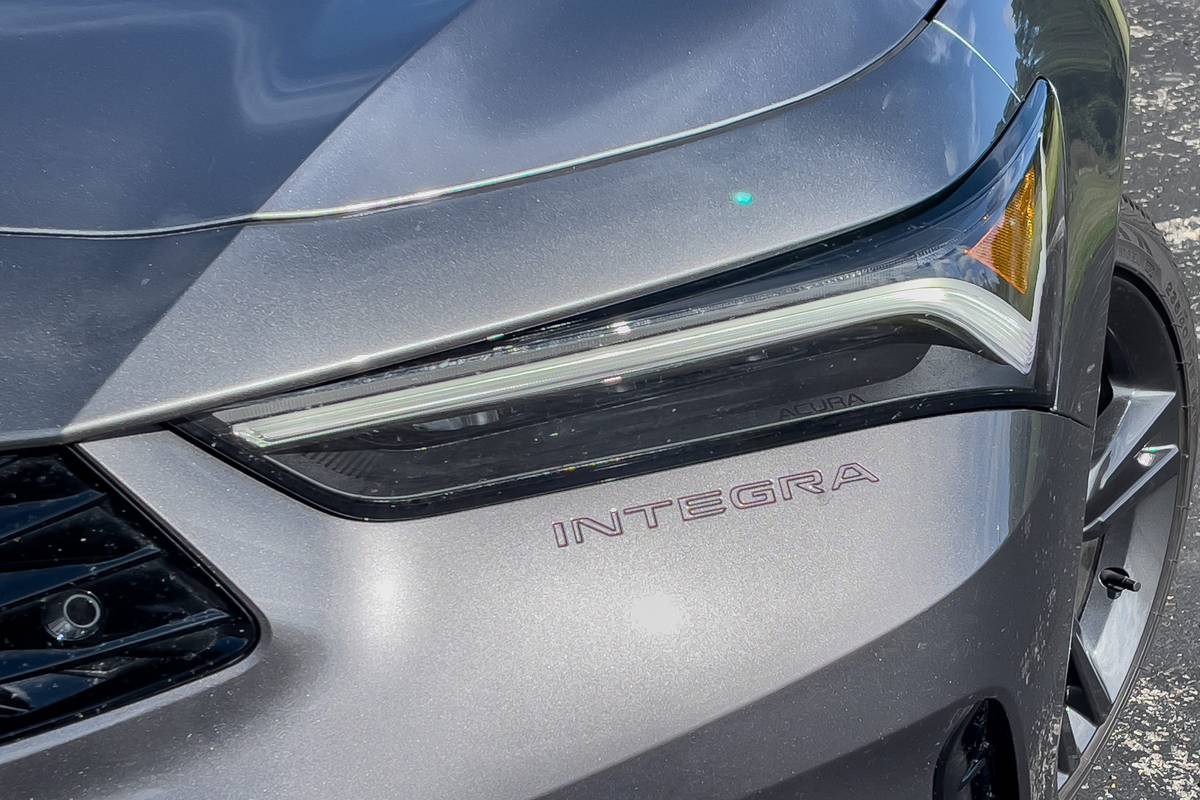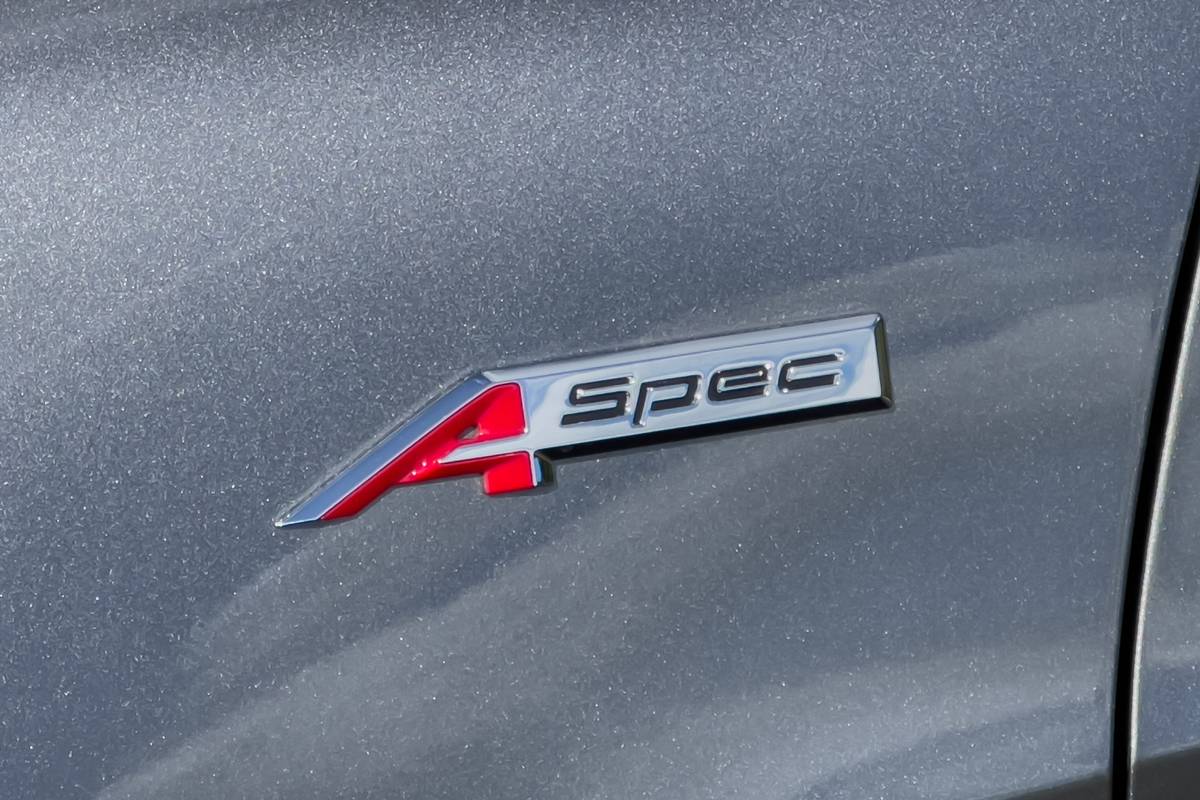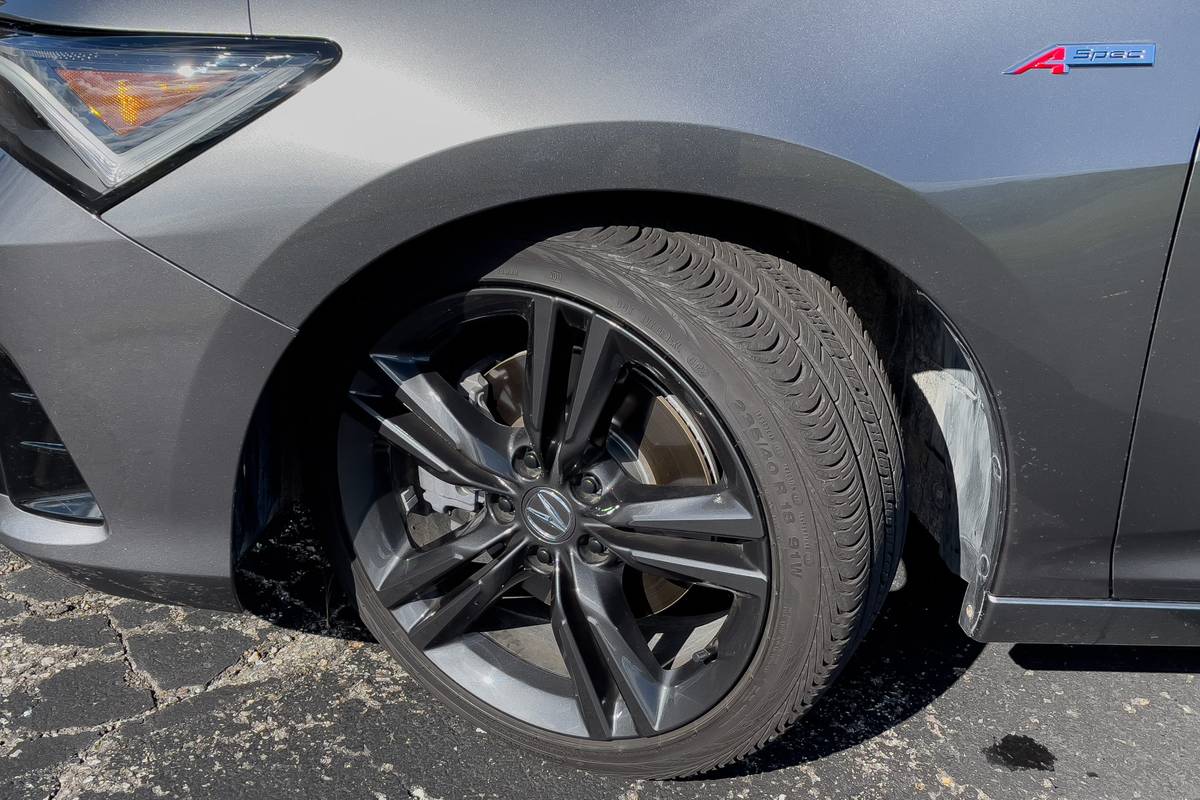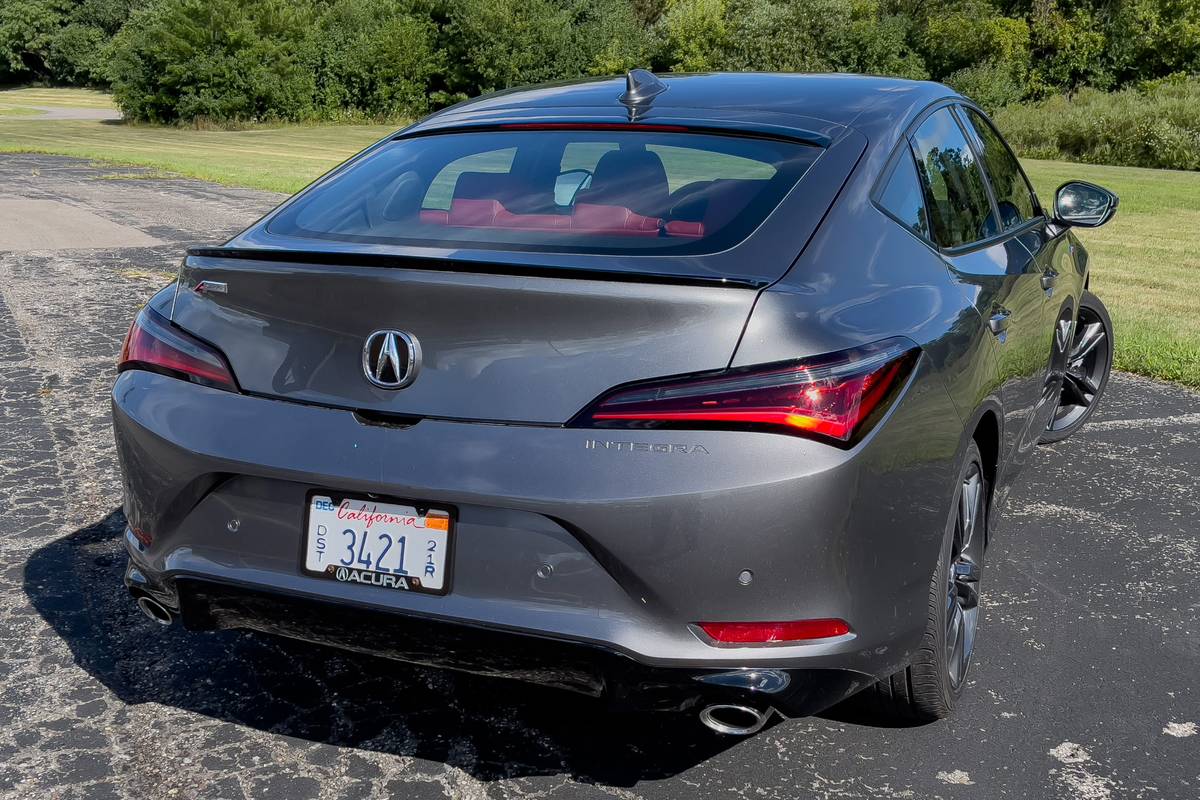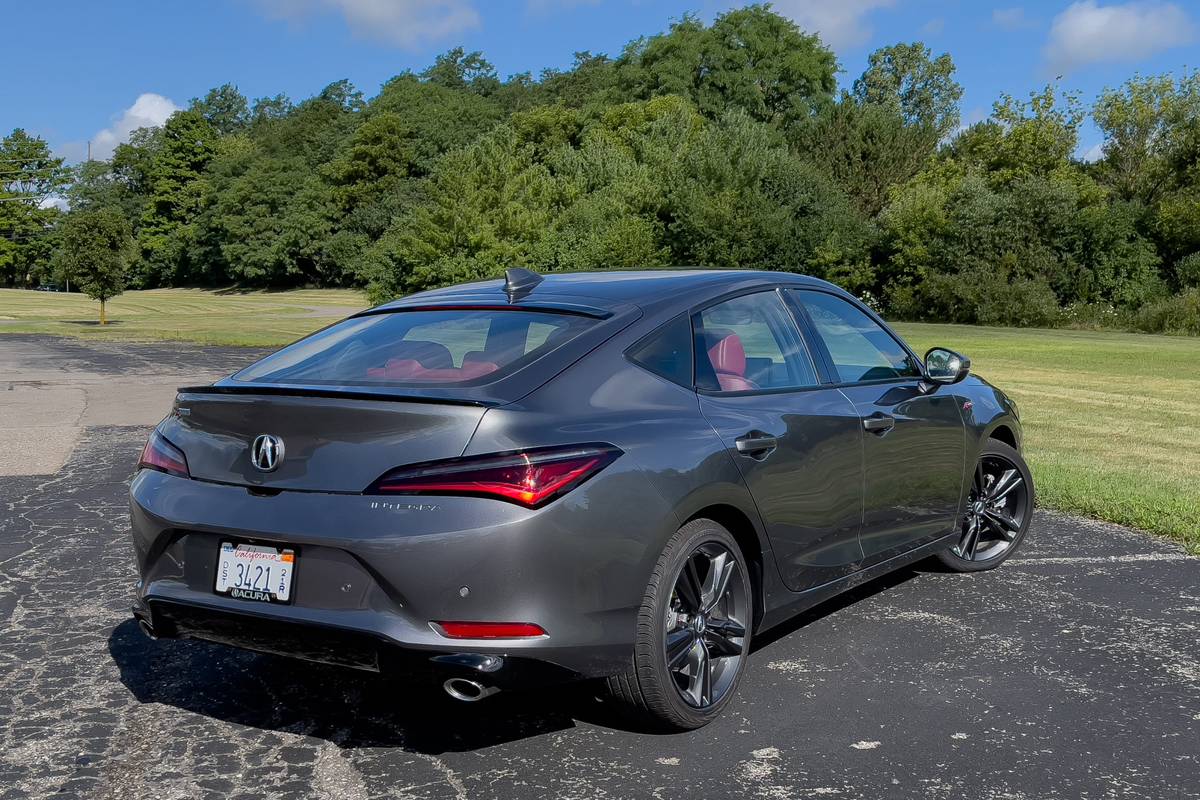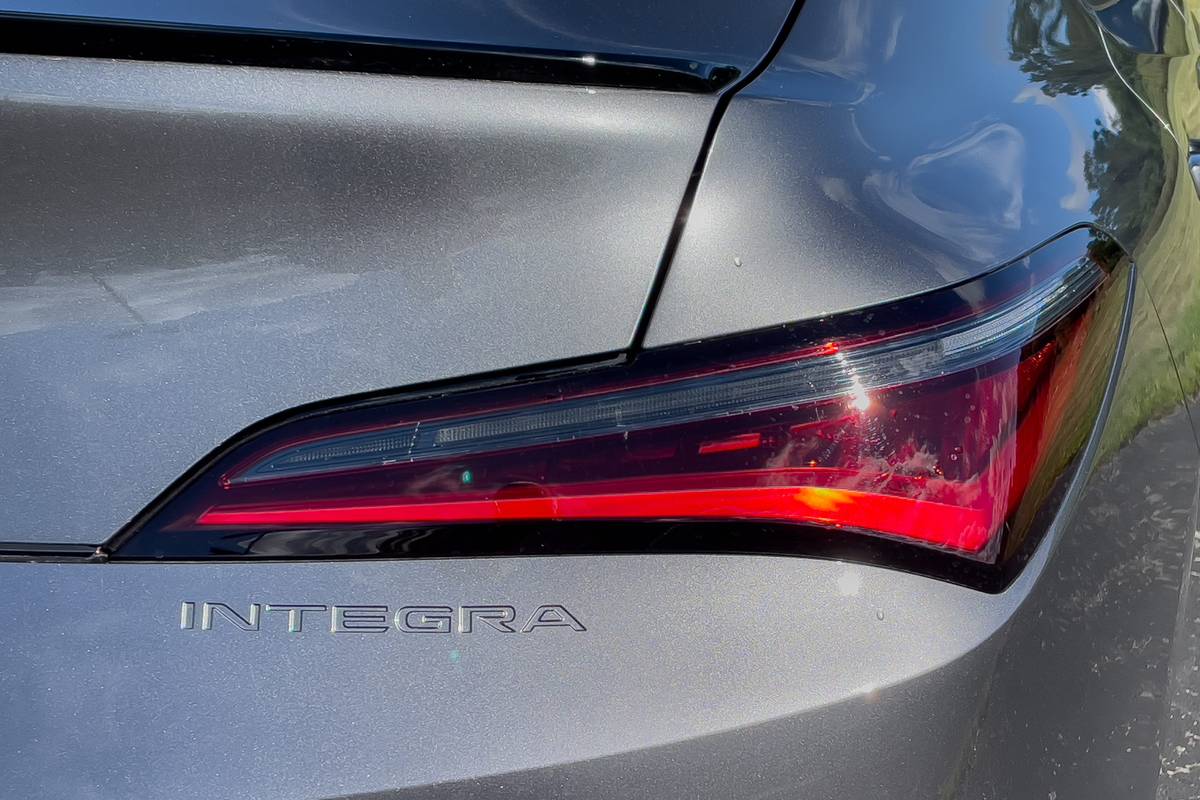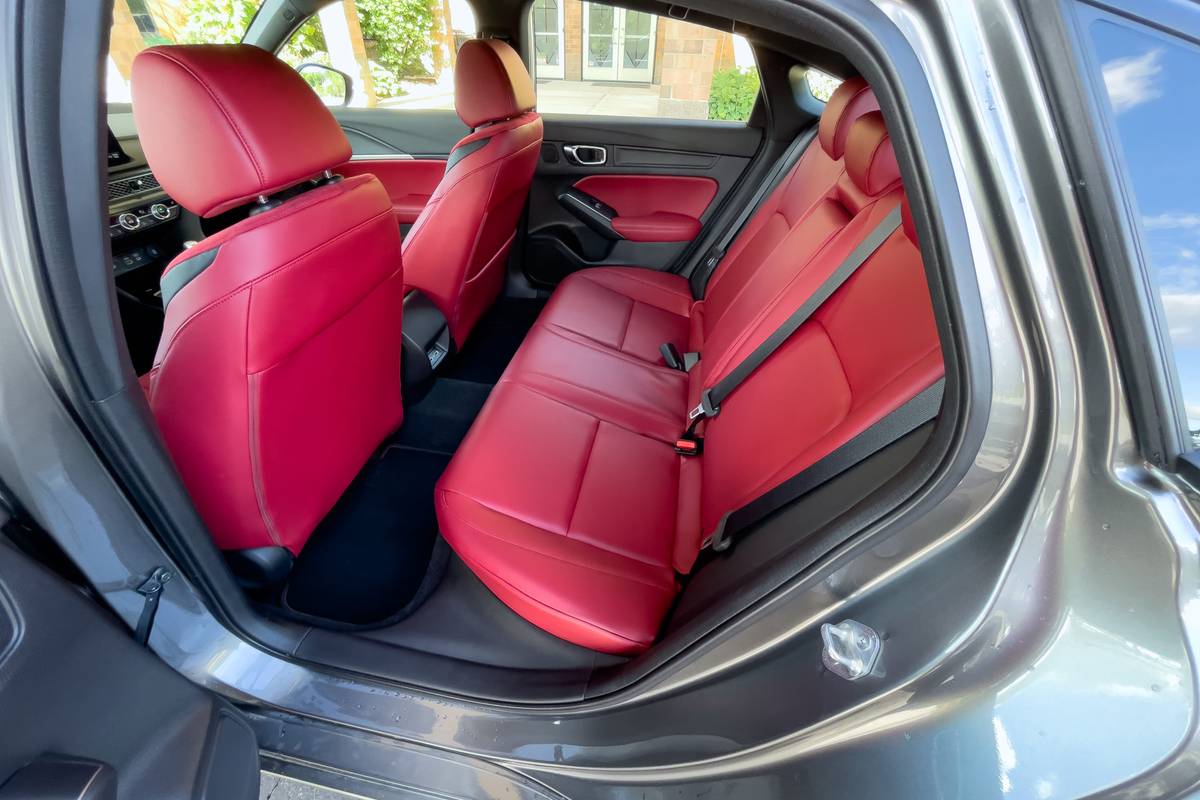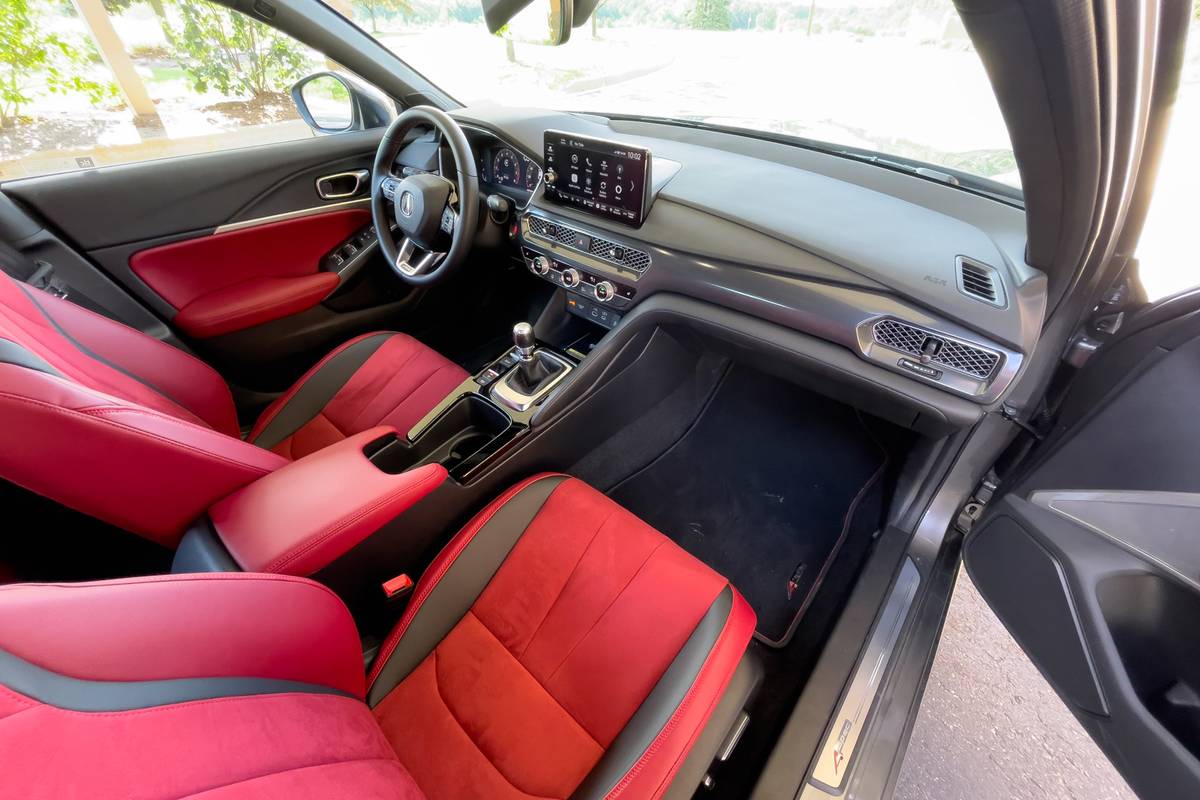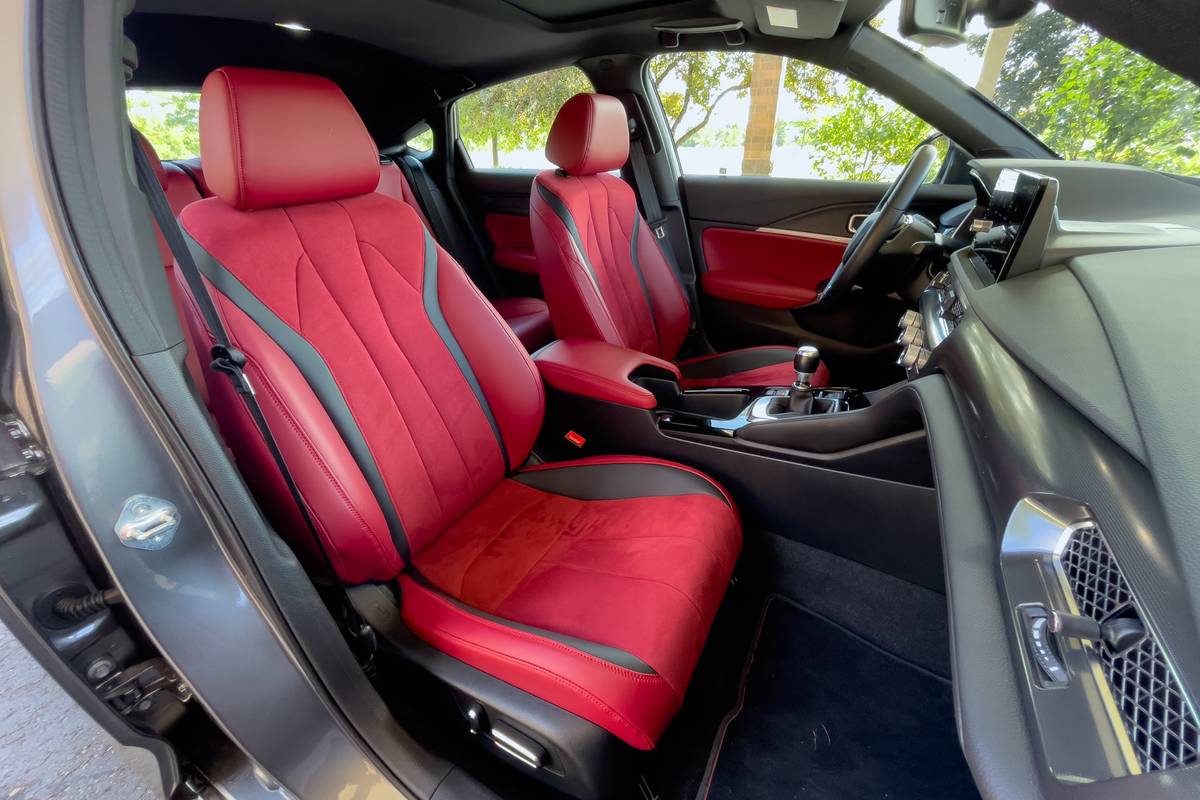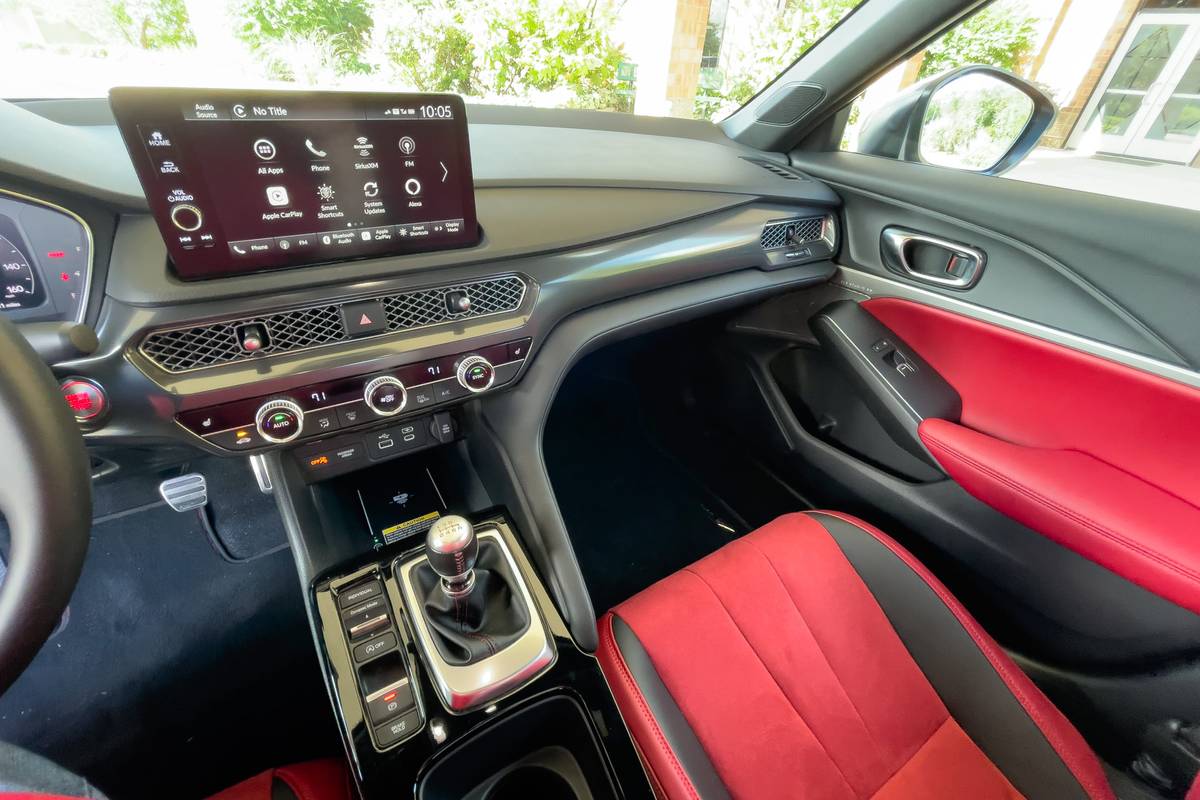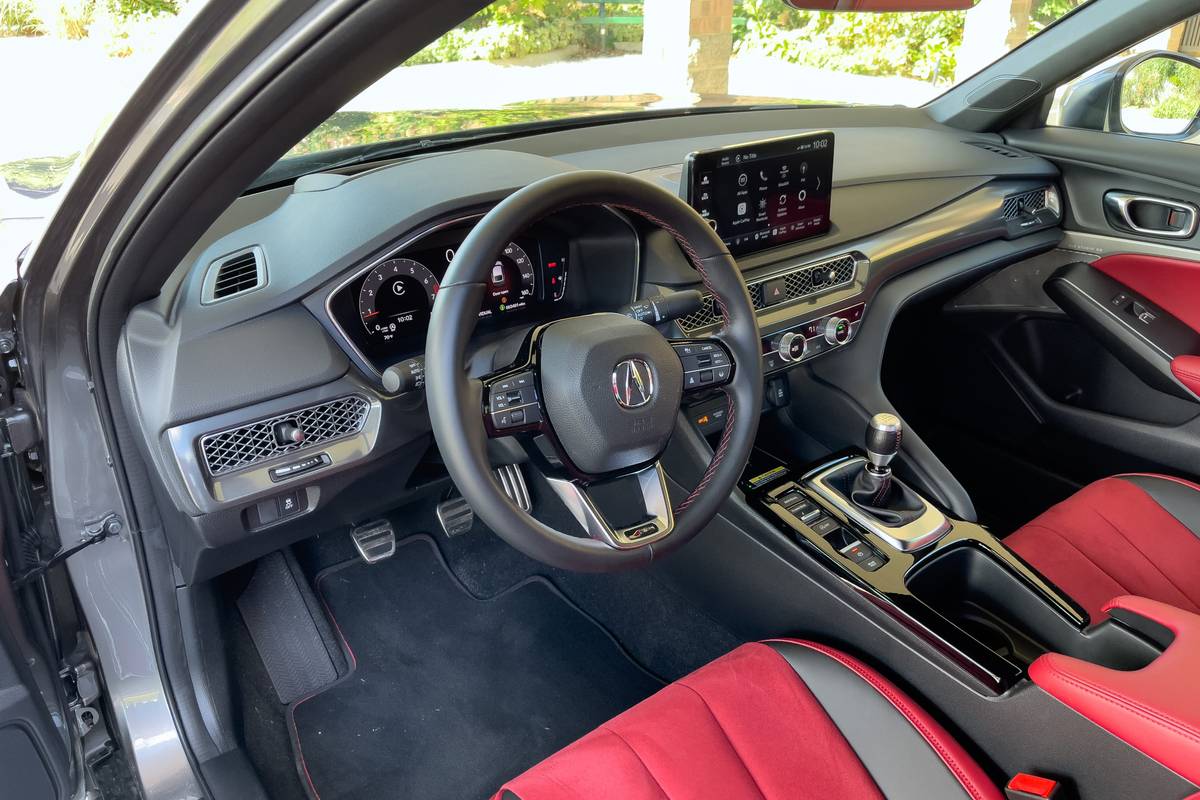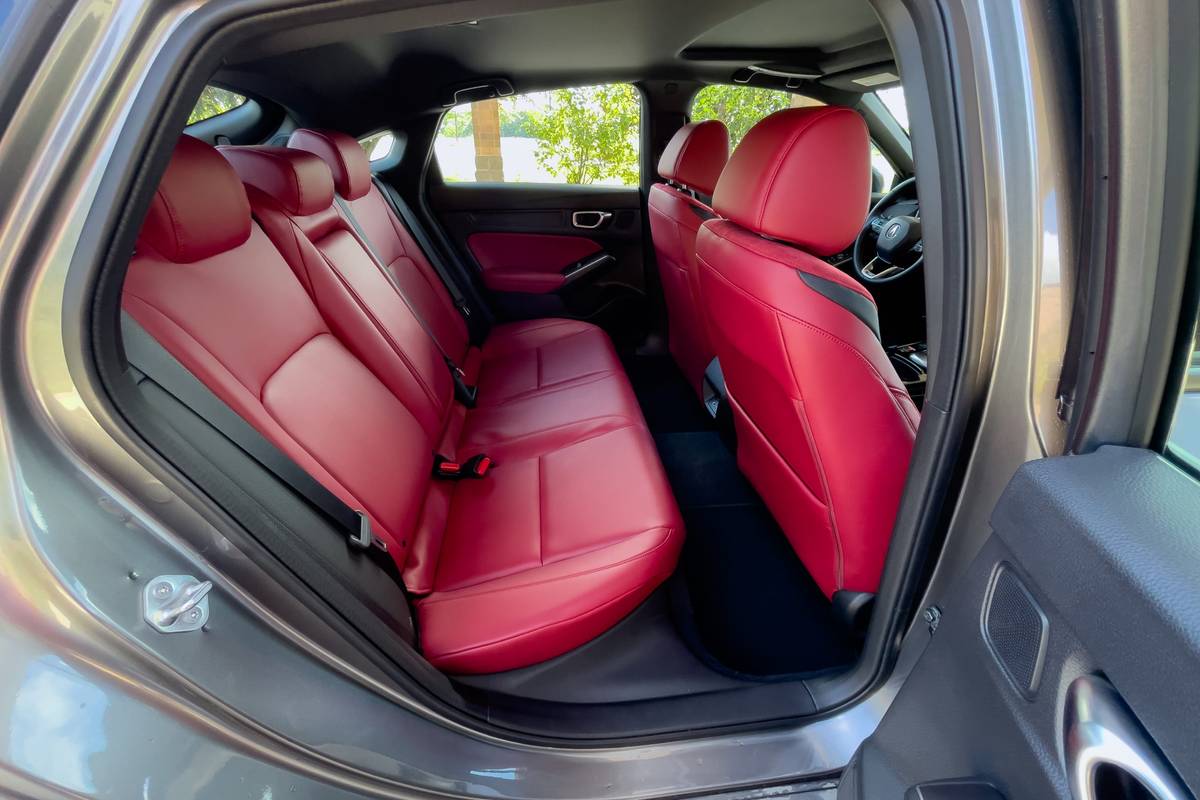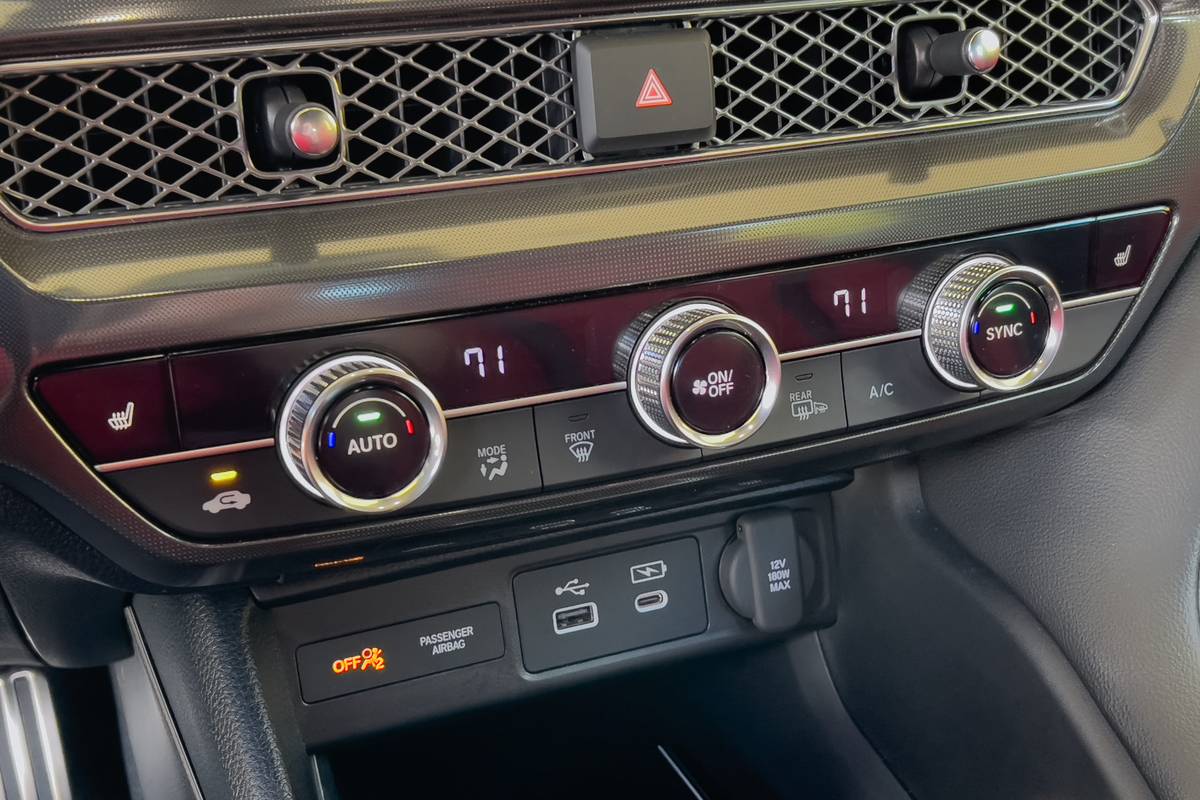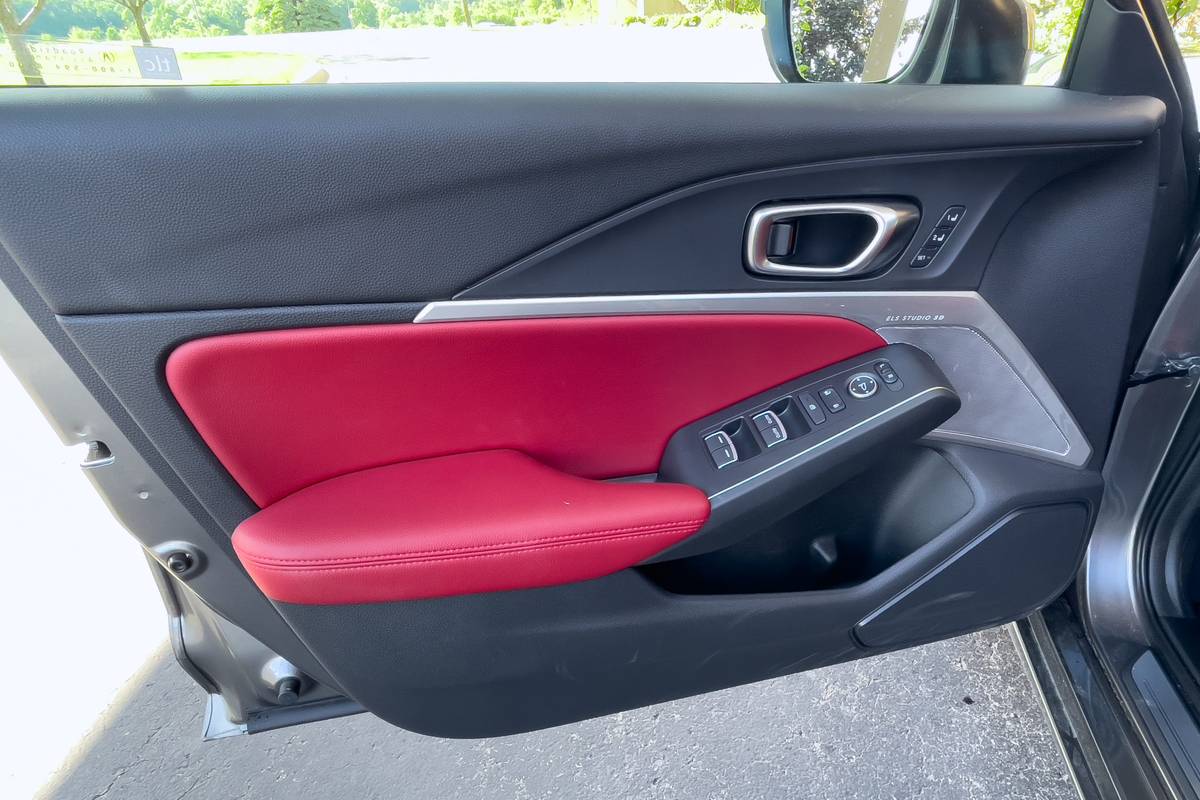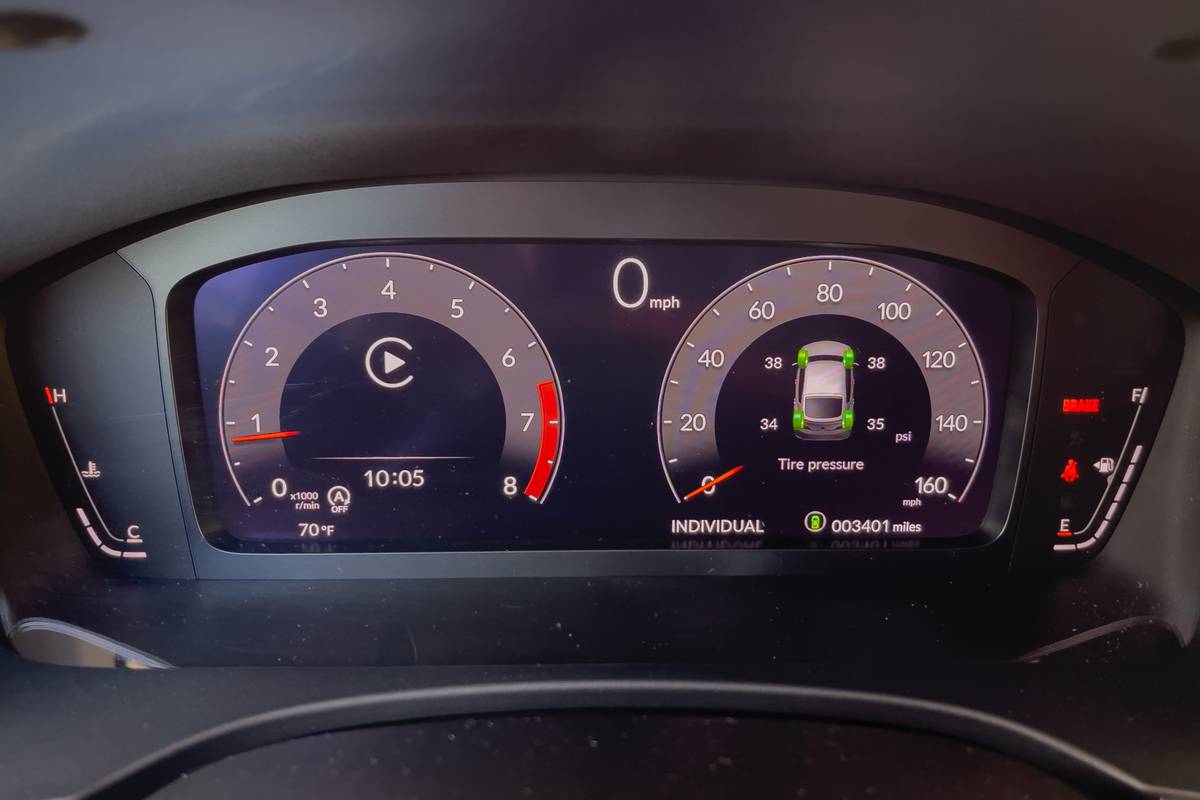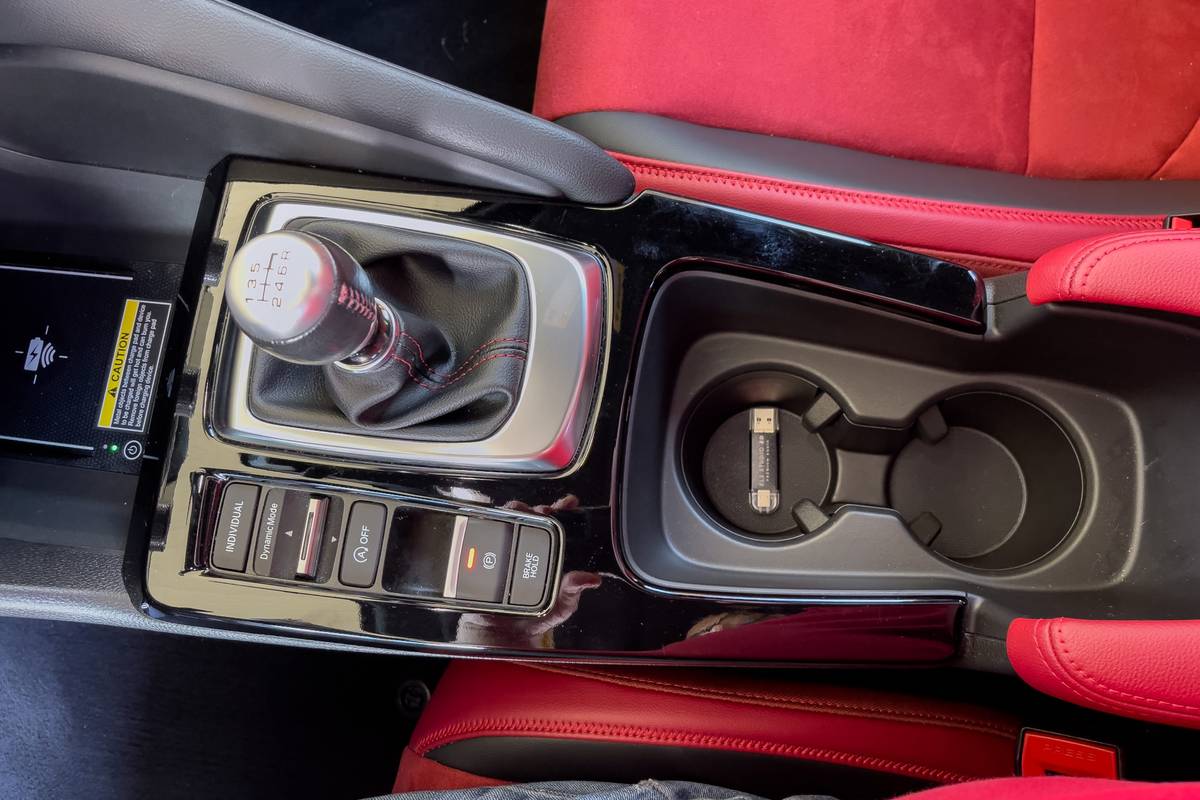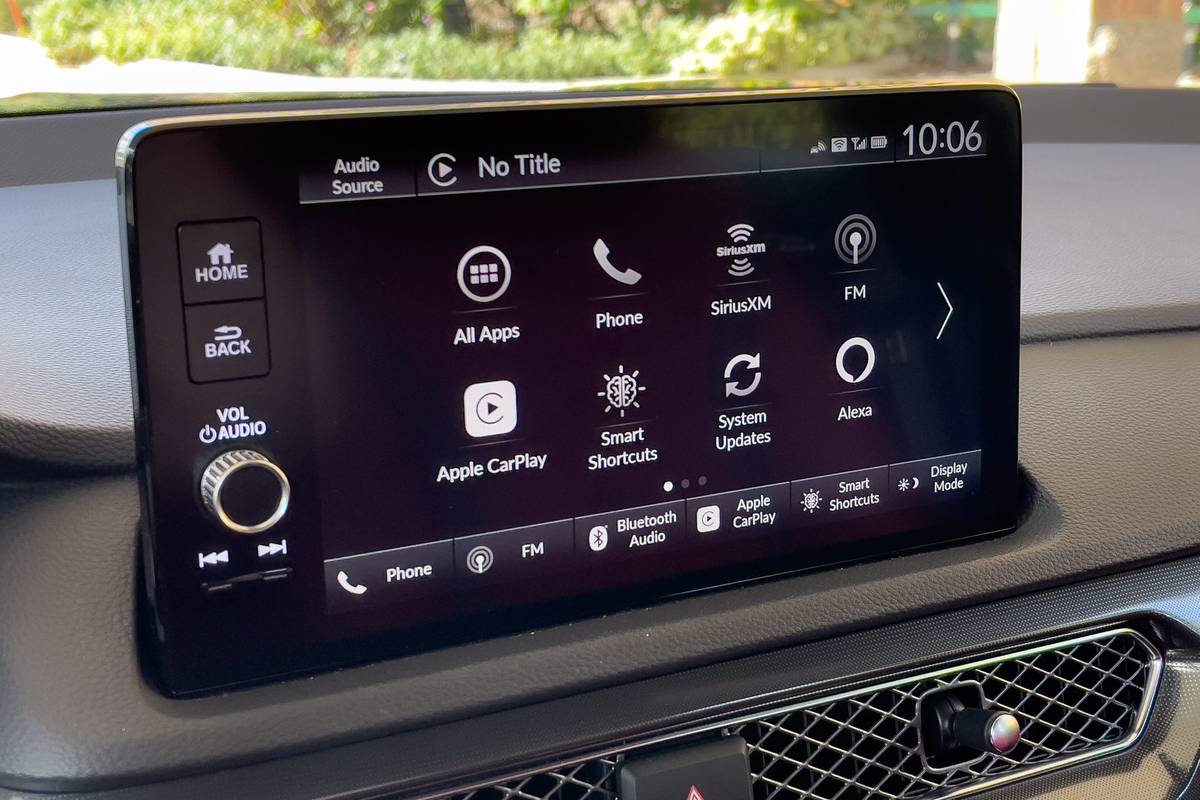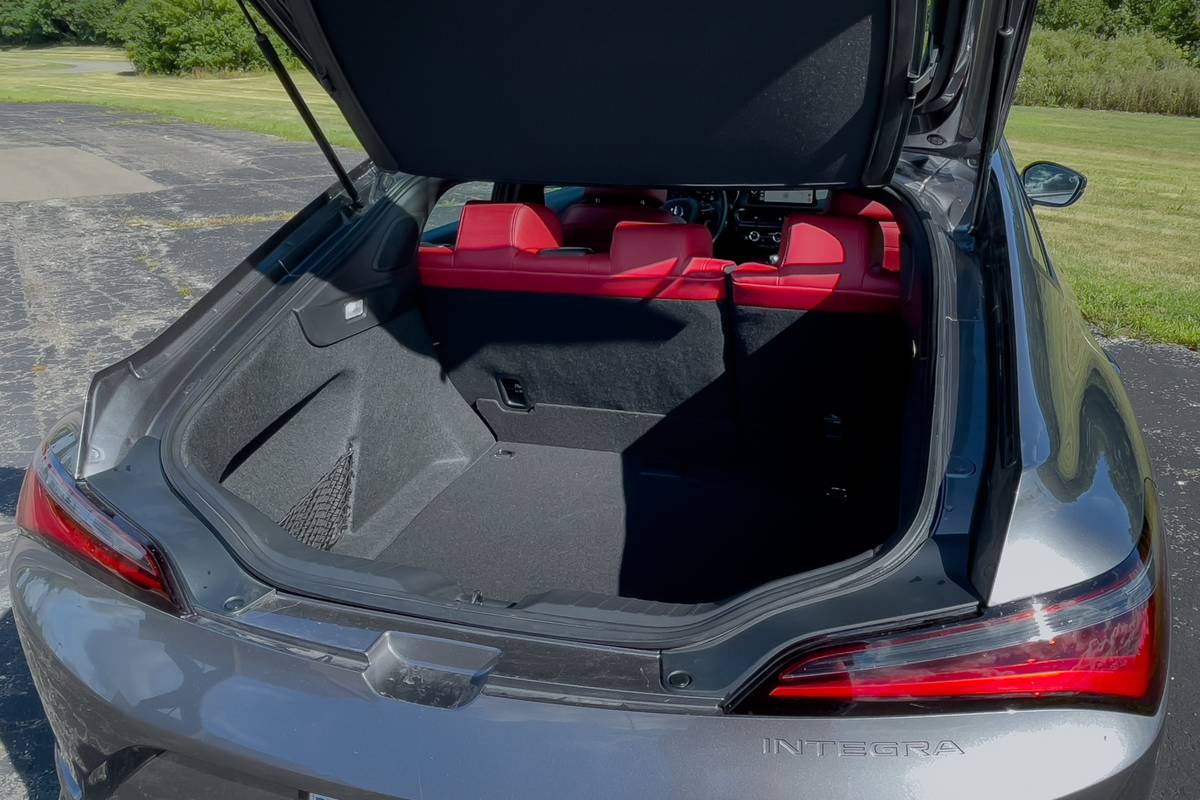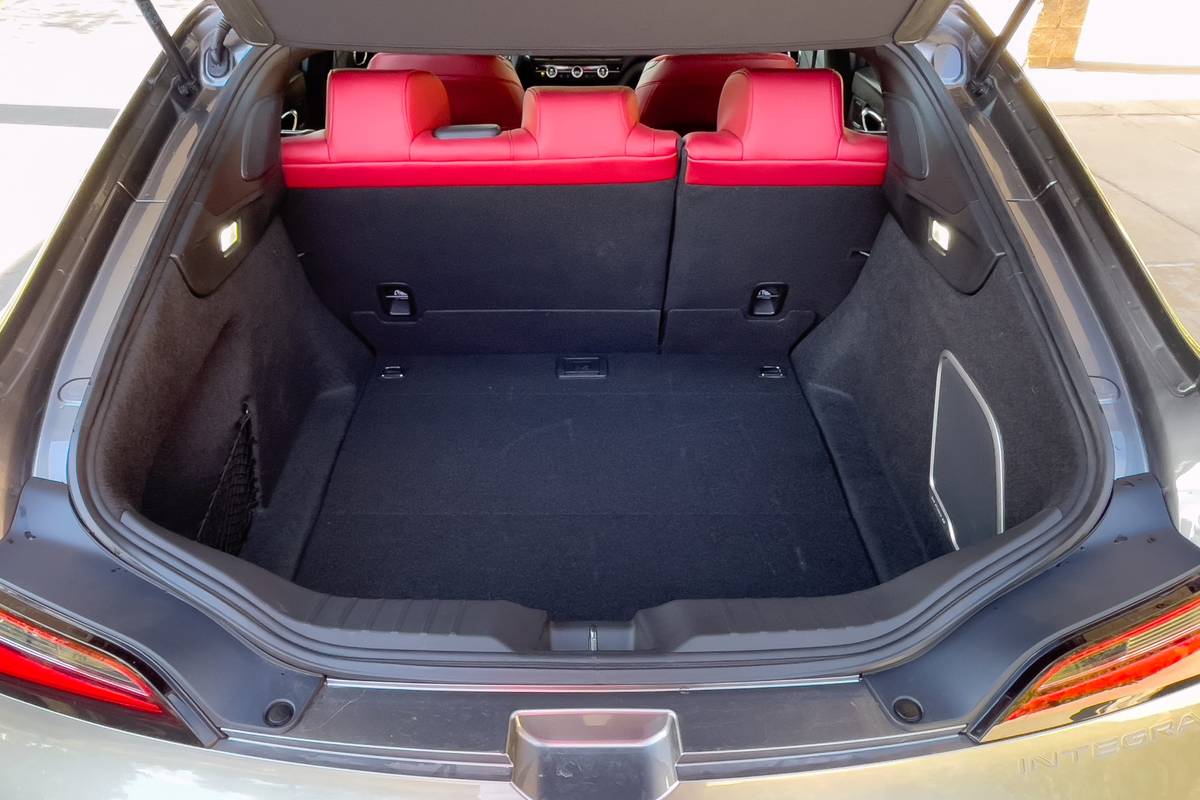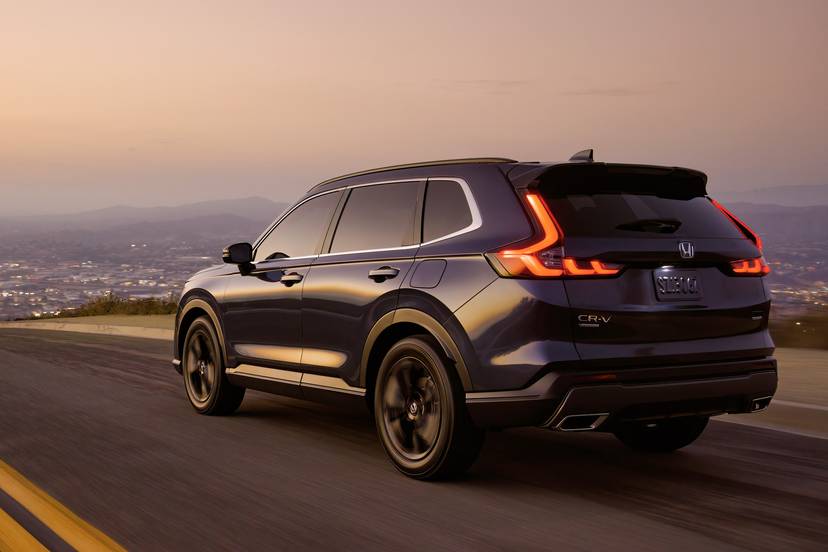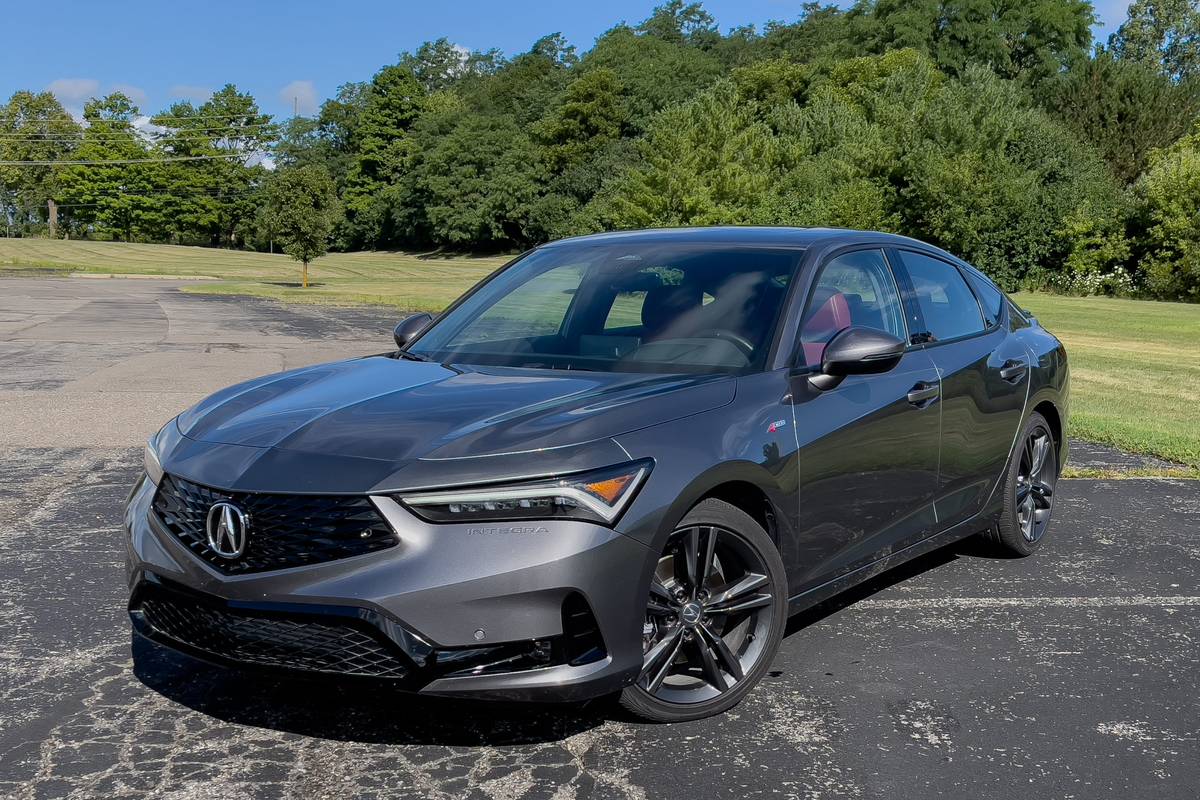
The verdict: The all-new 2023 Acura Integra is a snappy, crisp-handling, value-priced sports sedan that doesn’t go far enough to differentiate itself from the related — and less expensive — Honda Civic Si.
Versus the competition: The Integra’s sportier A-Spec trim levels compete with models like the Audi A3, BMW 2 Series Gran Coupe and Mercedes-Benz CLA — all of which are more expensive, more luxurious and generally quicker.
When Honda introduced the redesigned 2022 Civic Si, one feature was notably missing: The previous generation’s adaptive suspension, which had been replaced with a non-adjustable steel suspension. It made the new Civic Si stiffer and bouncier than the one before it, and we lamented its demise.
Related: 2022 Honda Civic Si Review: Honda’s Love Letter to Its Performance Fans
But then Acura, Honda’s luxury brand, introduced the new 2023 Integra and we understood what was going on: The adaptive suspension had reappeared on a more expensive, more upscale, Acura-fied version of the Civic Si, along with a host of other refinements, options and modifications designed to evoke nostalgia for the Integra name. Our question then became whether the new Integra would be worth the added cost over a Civic Si given it’s not much more than a fancier, more luxurious, better-equipped and differently styled version of the same car. The answer, it turns out, is both yes and no.
What Hath Acura Wrought?
So what is this mongrel going by a name that’s become a nostalgic trigger for Japanese car fans worldwide? Just like the original, the 2023 Integra is a fancier, sportier and arguably more advanced version of the Civic — in this case, the Si — with the same powertrain, chassis and overall structure, but wrapped in unique sheet metal and featuring its own interior. The Integra is also available in combinations you can’t get from the Honda. For instance, the Si can only have a manual transmission, whereas most Integras come standard with an automatic transmission; a stick shift is available only on the top A-Spec with Technology trim level. The Civic Si has a trunk, while the Integra is only available as a hatchback, and the previously mentioned adaptive suspension can only be had on the Integra.
There are similarities, as well, mostly centered on the powertrain: a turbocharged 1.5-liter four-cylinder engine making 200 horsepower and 192 pounds-feet of torque. Routed through either a standard continuously variable automatic transmission or an optional six-speed manual gearbox, it’s good for a 0-60-mph time in the mid-seven-second range regardless of transmission, based on performance test results from several outfits.
My test car had the optional manual transmission, which went a long way toward making the Integra feel engaging and fun to drive, but it didn’t feel subjectively quick — especially compared with its competitors. The turbo spools up quickly and does provide some low-rev punch, but it runs out of steam at higher rpm — an issue for highway passing and high-speed blasts. I know it’s cliche to say a car needs more power, as most actually don’t, but for the Integra to be a proper sports sedan — not just a “sporty” sedan — it actually does need more power.
At least the power it does have is accompanied by some pleasantly snorty exhaust noises, which can be adjustable. The problem is that while this welcome sound is easily heard inside the cabin, so is a lot of other road and wind noise. The Integra may be on the lighter end of the spectrum in terms of curb weight, but perhaps too much sound-deadening material was eliminated in pursuit of that goal.
The Integra could also use some stickier tires. Rather than having a summer tire option like the Civic Si, the Integra makes do with decently grippy all-season tires, likely for ride quality and noise trade-offs. They only marginally dampen the Integra’s sharp handling; there’s excellent feel and feedback that comes through to the driver. If you want to make it even more fun, swap out the all-seasons for some summer meats when the weather turns nice; you’ll likely be well rewarded.
The Integra’s active dampers have three settings. In Comfort and Normal mode, they beautifully smooth out what is a jarring, bouncy ride in the Civic Si. Even in the Integra’s Sport mode, it never gets quite as aggressive as the Civic, and that’s a good thing for your back and kidneys.
Where the Integra (Mostly) Works
Let’s forget the Integra’s Civic roots for just a moment and instead focus on the competitive set Acura has put the new sedan up against. That includes cars like the roughly $36,000 Audi A3, which has a bigger engine, more torque and is a full second quicker to 60 mph, according to manufacturer claims. The Mercedes-Benz CLA250 is more expensive, at around $40,000 to start, but it has more horsepower, a lot more torque and is even quicker to 60 mph: Mercedes says it makes the trip in 6.3 seconds. The BMW 2 Series Gran Coupe starts around $39,000, and like the others, it’s quicker and has more horsepower and torque than the Integra. (All prices include destination fees.)
While those cars are all quicker, quieter and more luxurious than the Integra, the Acura has them beat on cost. A base Integra starts just north of $32,000 — well below the starting price of any of these entry-luxury German sports sedans.
It’s when the Acura gets optioned up to its top trim with all its bells and whistles that it becomes more competitive with its German competitors in terms of equipment and amenities. In this regard, it works better than the outgoing (unloved, unmissed) Acura ILX, which never really made a mark in the class. Changing the car’s name to Integra (the only Acura model with a name these days instead of a three-letter moniker) was a big step toward reestablishing some competitiveness in this segment. Playing on that nostalgia may be a cheap way to get attention (would you care much about this thing if it were still called ILX?), but it definitely works; look what playing the nostalgic-name card did for the Ford Mustang Mach-E electric SUV.
The Integra does not, however, hold up well when comparing cabins. It’s a little bit nicer inside than the Civic — which is already nicer than most anything in the compact sedan class — but it’s not nicer than its luxury compact sedan competitors. The interiors of the Mercedes-Benz and BMW, in particular, easily outclass it in every way, from controls to multimedia sophistication. Yes, the Integra offers some fun interior colors (check out that red upholstery) and plenty of standard equipment, but its real advantage is its size: It has a much larger cabin than any of the German sedans, plus a backseat that’s usable for adults and plenty of room up front, as well. Materials quality, however, tends to drop off when you get to the backseat, and the car lacks things that most premium luxury vehicles have, such as rear air vents. Playing in the big-boy luxury category means you have to bring the goods to match the price, and the Integra only makes it halfway there.
Where the Integra Doesn’t Work
The bigger problem is that the Integra isn’t that big of a step up from the Civic Si, which is itself a screaming value proposition. Its interior is nearly as nice as the Integra’s, and it feels just a little bit quicker and sharper in most ways. What this really means is that the Integra is only the better choice if you simply must have the Si’s 200-hp engine with an automatic transmission, if you want the increased utility of a hatchback versus the Civic’s trunk, or if the Si is just too stiff for your daily commute and you want a more comfortable ride. Put simply, the Integra is just a more grown-up take on the Honda Civic Si — less boy racer, more weekend warrior.
Badge devotees are unlikely to consider it alongside the more traditional German sports sedan offerings, but in truth, the Integra only marginally competes with them anyway. The Integra’s base price of just a tick over $32,000 — and a top trim cost that comes in around $38,000 if you stay away from the options list — means it’s a screaming deal compared to the Germans. It’s also, however, about $3,000-$8,500 more than a Civic Si (which only comes one way: loaded with options). That’s a much harder pill to swallow.
More From Cars.com:
- 2023 Acura Integra: Shifting Away From the ILX
- 2023 Acura Integra Earns Top Safety Award for First Time
- Which New Cars Have Manual Transmissions?
- Research Sedans
- Shop for a 2023 Acura Integra
Related Video:
We cannot generate a video preview.
Cars.com’s Editorial department is your source for automotive news and reviews. In line with Cars.com’s long-standing ethics policy, editors and reviewers don’t accept gifts or free trips from automakers. The Editorial department is independent of Cars.com’s advertising, sales and sponsored content departments.
































